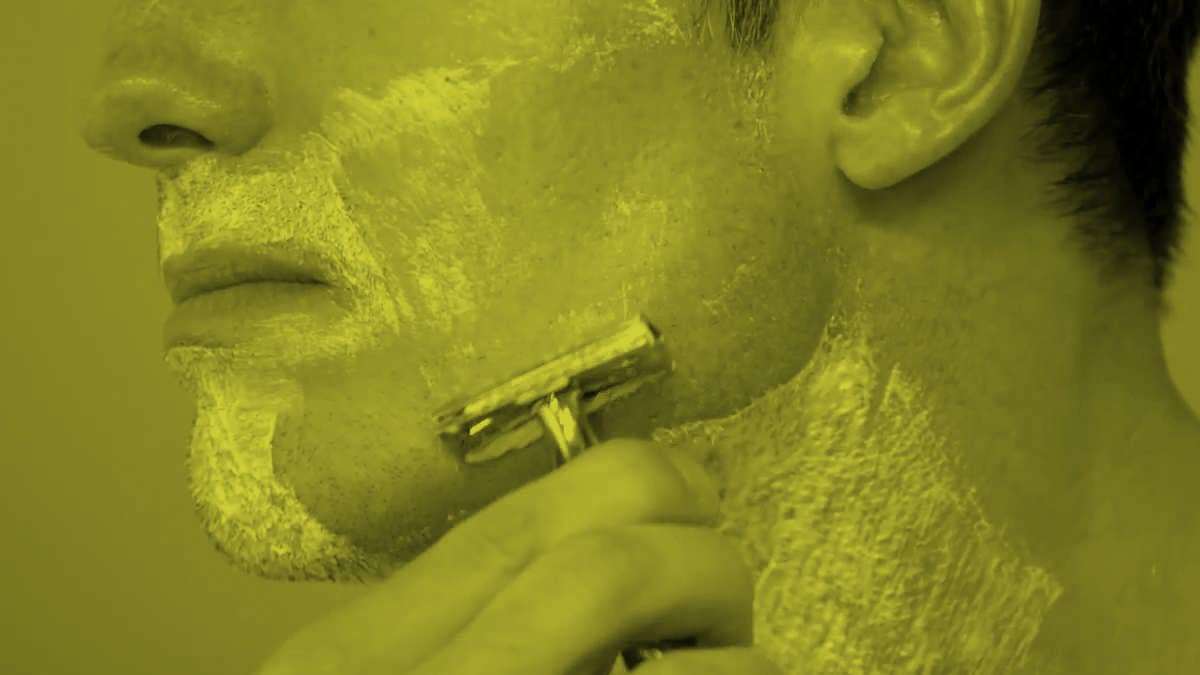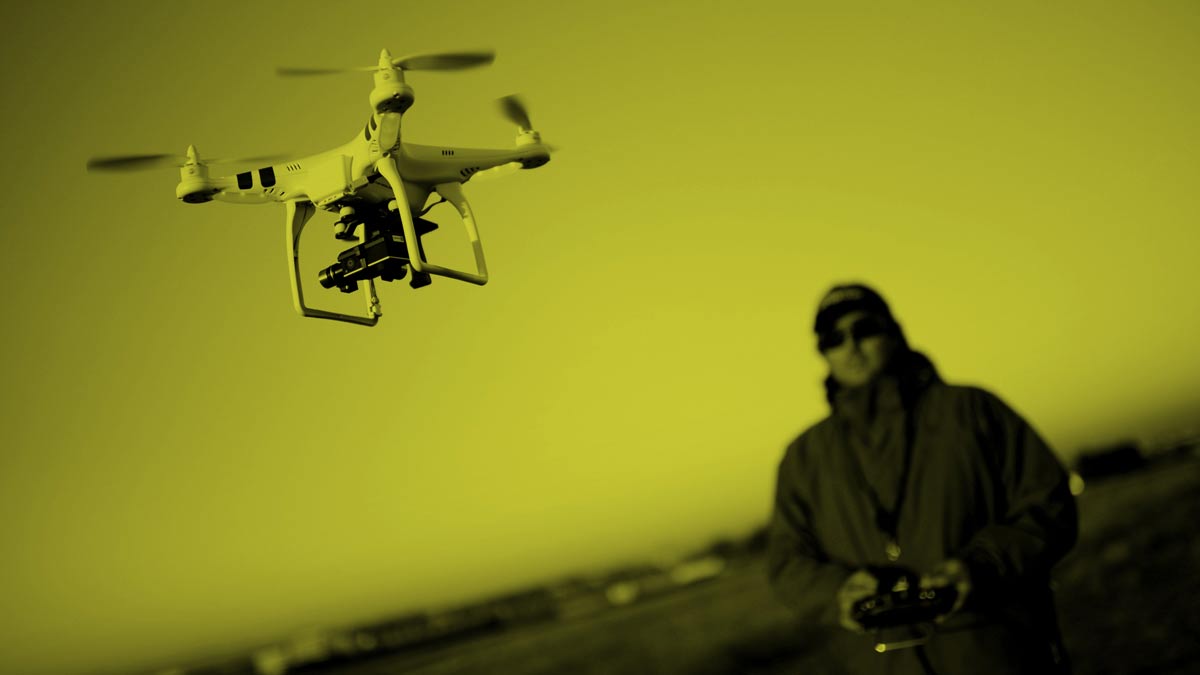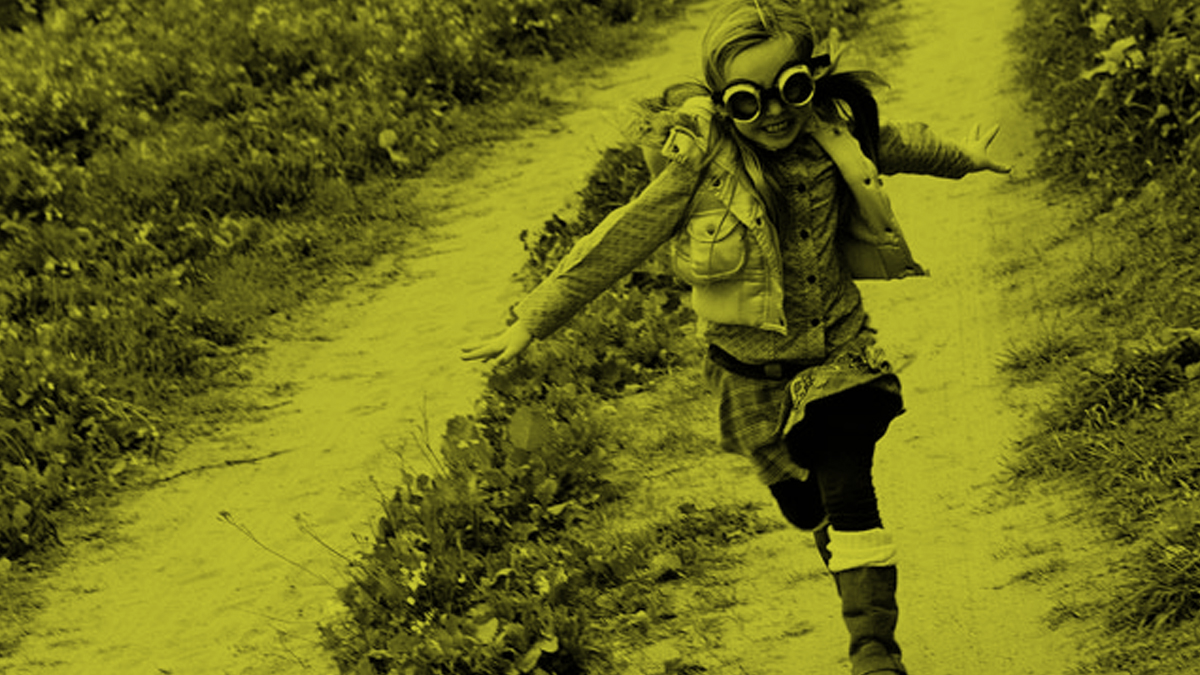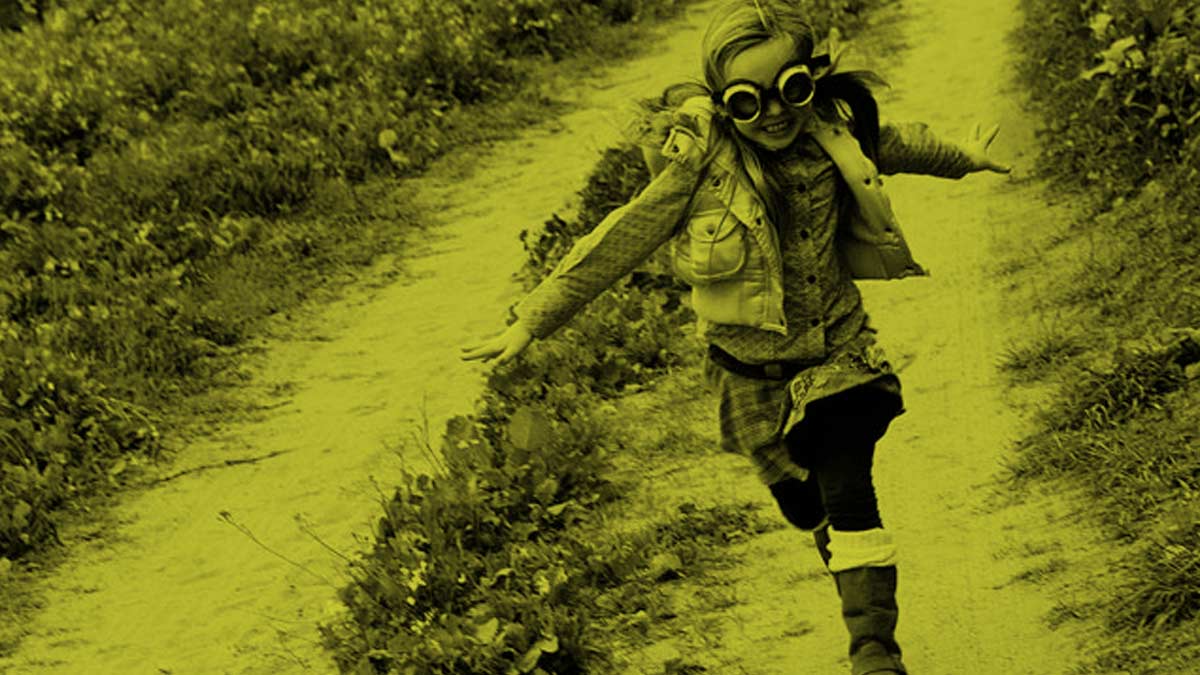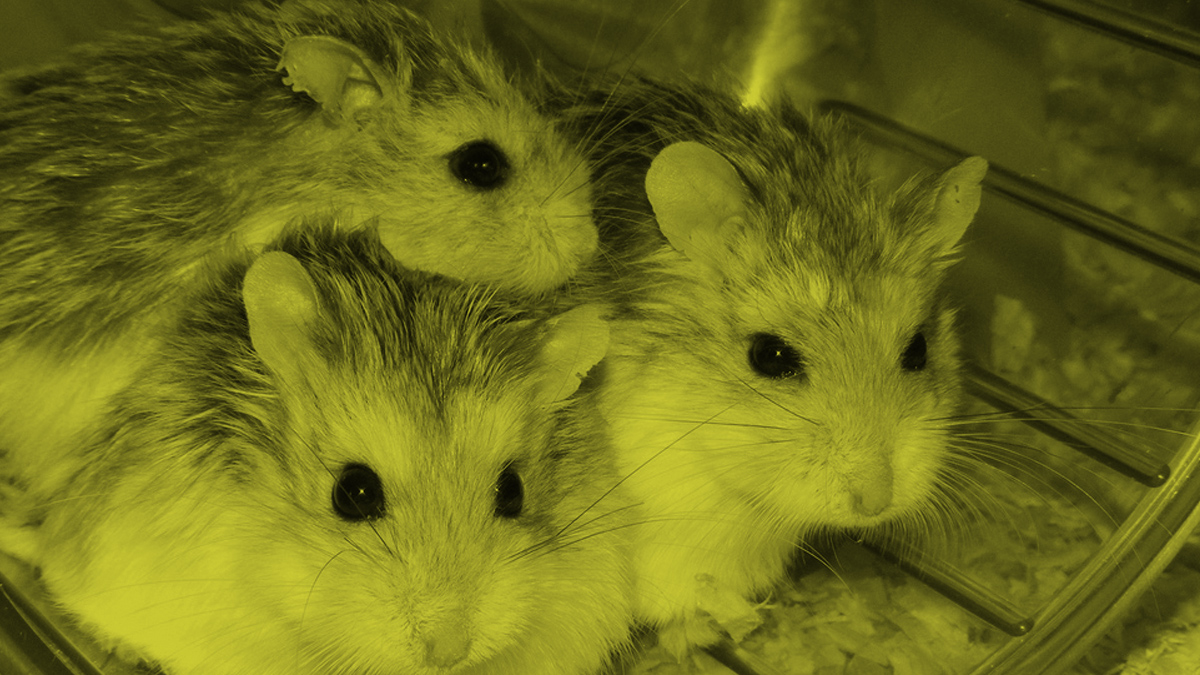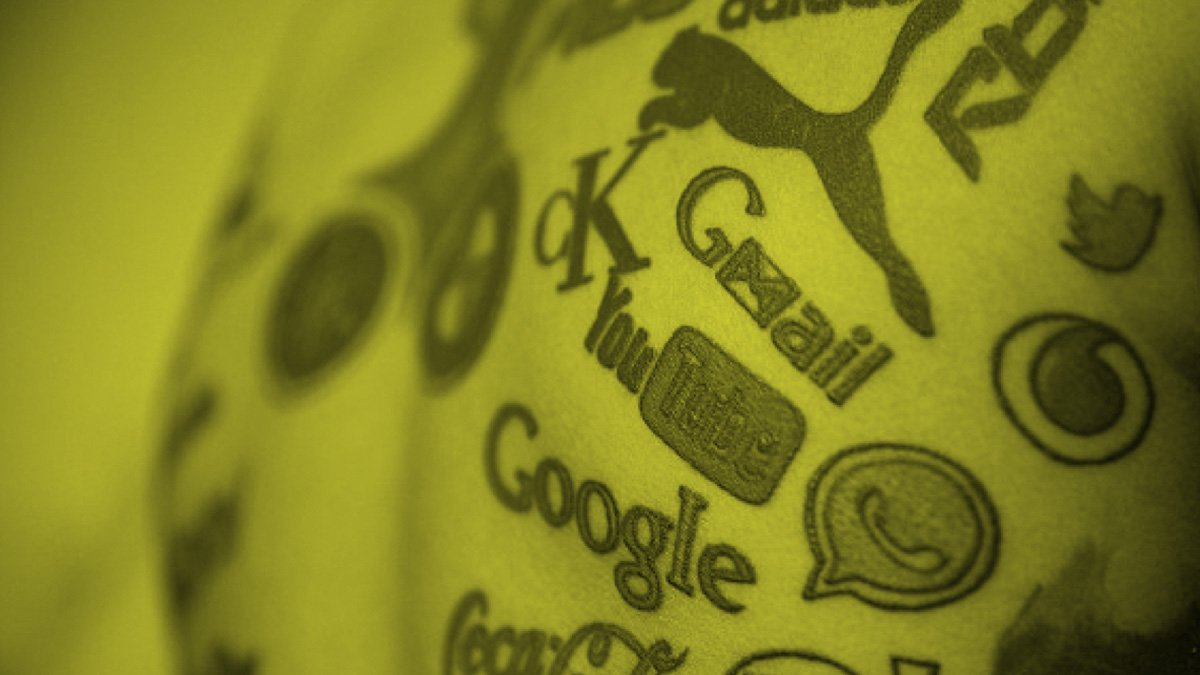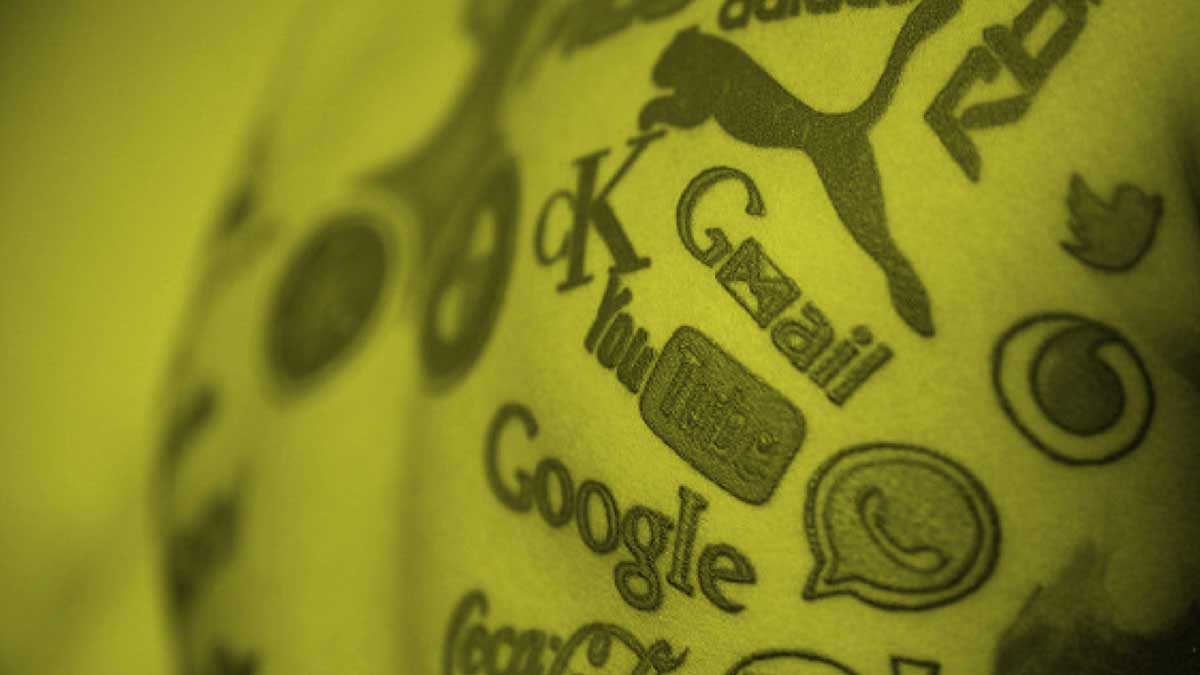A Smell That Will Make You Money
Scientists have proven you are 100 times more likely to remember something that you smell than something that you see, hear or touch.Now brands are increasingly putting the power of scent to work.
Last week I was cooking a recipe that called for coconut oil. When I opened the jar I was immediately transported to being 16 years old on a beach in Michigan putting on suntan lotion. I almost got smell memory whiplash.
Smells are processed by the amygdala, the part of the brain responsible for memory functions and processing emotions. Scientists have proven you are 100 times more likely to remember something that you smell than something that you see, hear or touch.
Now brands are increasingly putting the power of scent to work.
In Orlando, a company recently projected "waffle cone" smell adjacent to an ice cream parlor, driving a 50% sales increase. REI used the smell of “campfire and pine” and guess who started selling more backpacks? Don’t even get me started about what Cinnabon does. You know what they do.
Do you have a service or product that you can enhance with a scent? If you do, you might be closer to smelling success.
Schrödinger's Cookie
Marketing folks know that any time you create a line extension, one consideration is whether or not it will cannibalize your mainline product. However, the greatest worry is always: “Will it degrade the brand?”.
Pop quiz. When I say these flavors, what do you think of? Biscuits and Gravy, Greek Gyro, BLT, Cappucino and NY Reuben. Well, I’ll tell you what I don’t think of. Lay’s Potato Chips. But that’s what they are. The result of Lay’s “Do Us Flavor” campaign of limited-edition chips.
OK, let’s try again. Jelly Donut, Mississippi Mud Pie, Raspberry Danish, English Breakfast Tea and, wait for it…Swedish Fish. Give up? Oreos.
Marketing folks know that any time you create a line extension, one consideration is whether or not it will cannibalize your mainline product. However, the greatest worry is always: “Will it degrade the brand?”.
New flavors can breathe life and excitement into somewhat boring consumer staples. Happily, they give their social media teams something to tweet about. But they beg the existential question: When does an Oreo become not an Oreo? When does it become a parody of itself?
Experimentation and innovation energize and revitalize brands. But care should be taken that we don’t try too hard to fix something that isn’t broken. I mean, yesterday I walked by Pumpkin Spice Twinkies in the store. Is nothing sacred?
A Close Shave
Blind loyalty to a brand can come back to bite you. I’ve known I’ve been getting ripped off for a while. But I just never did anything about it. Now I feel violated.
The viral video from Dollar Shave Club came out 5 years ago, so I’ve known I’ve been getting ripped off for a while. I just never did anything about it.
Gillette had me hypnotized into thinking that ever-increasing blade counts and handles with more foils than a Lamborghini translated to a shave only their product could achieve. Call me a slow learner, but I didn’t realize the extent of my stupor until Saturday.
That's when I walked into CVS to get cartridges for my aging Trac II razor. $32.99 for ten cartridges. No handle mind you, just bits of plastic with two blades at $3.29 each. I felt violated. My brand loyalty and my perception of quality got nicked by reality and I needed a styptic pencil.
A few days later, my new steel safety razor and 100 single-edge blades (at 5 cents each) arrived from Amazon. Wouldn’t you know it, with a little practice the shave I got from a 5 cent razor was just as close - and as a bonus, the luxurious feeling of the weighty steel handle was intensely satisfying.
Don’t get me wrong, I value quality, design, performance and technology. When you deliver them to me consistently I am the most devoted of brand evangelists. But when a brand begins to take advantage of that devotion, delivering the same results at a 6400% premium and are banking that I won’t notice (and I didn’t), let’s say I felt double razor burned.
How are you honestly earning your customers and clients devotion?
I'm Watching You
In business and design we often develop a products by thinking about our customer target and then creating something we think they will want. But often we land far off the mark and wonder what went wrong.
Over a period of 6 years, the photographer John Thackwray photographed the bedrooms of 1200 millennials from around the world. The range of physical environments, materials, colors and collections is absolutely fascinating.
In business and design we often develop a products by thinking about our customer target and then creating something we think they will want. But often we land far off the mark and wonder what went wrong.
What went wrong lies in the difference between thinking and observing.
Successful marketing relies on an intimate knowledge of your customer. You can’t learn what you want to know by asking them, because what they say they want and what they end up buying is often very different. Just ask someone who runs focus groups.
You have to observe them.
After looking at the bedroom photograph of just one of these millennials, I guarantee you could design a product experience that would delight them.
I am sure you have thought long and hard about your customer but have you really observed them?
The Secret
In a world of failing small town main street businesses, this little soft-serve stand is rock solid. Why?
Soft-serve ice cream is simple. Chocolate, vanilla, chocolate-dipped, sprinkles. Like I said, simple. No secrets.
Last weekend my wife and I were biking on a rail trail in the Delaware River Valley. It was hot, so we stopped at a little Mom and Pop soft-serve stand. I mean, why work off the calories if you can’t put a few back on?
They had 21 flavors of soft-serve. Twenty. One. Every flavor you usually find at a regular scoop ice cream parlor, rum raisin, pistachio, rocky road, they had it, but in soft-serve. I’d never heard of such a thing.
So I got butter pecan and it was…amazing. What kind of soft-serve innovation voodoo magic have these people stumbled upon? Why does the entire world not know about this?
I’ll tell you why. They don’t tell anyone. Oh sure, everyone for 25 miles around knows about them. In a world of failing small town main street businesses, this little soft-serve stand is rock solid. Why? Because they have a complete lock on the market. No competition. Anywhere.
A wildly successfully business isn’t always about scale or marketing. It’s about having a secret. Inside every business there is at least one secret that is magic.
Let’s uncover yours.
This Is Why You Need A Drone
Companies trying to create brand strategies internally are hampered by the same thing: a lack of perspective. They’re just too close. Strategic accuracy requires an aerial view
During our town’s 4th of July fireworks I noticed something new. Little red lights up in the sky over the crowd. Aliens watching the festivities? Nope. Drones. Filming the fireworks from just outside the explosions.
High in the upper canopy of the Amazon, hovering above an active volcano, helping search and rescue teams, drones are giving us a new perspective. Perspectives we couldn’t get without their help.
Companies trying to create brand strategies internally are hampered by the same thing: a lack of perspective. They’re just too close. Strategic accuracy requires an aerial view to understand not only what the brand is about, but its competitive landscape and its customers.
Company insiders can create blindspots. CEO’s and CMO’s have strong ideas about what their company is or is not. Only an outsider has the independence to evaluate, recommend re-thinking, or even setting aside these preconceptions.
Branding agencies are like drones. They can give you that birds-eye perspective you simply cannot have no matter how high up you are in a company. Would your company benefit from seeing the fireworks from a different perspective?
photo: NANO CALVO/CORBIS
The Prince Needs A Logo
He sent me a detailed project brief. I sent him a proposal. He accepted it no questions asked. I thought this was a little odd, but I told myself everyone deserves an easy client once in a while. Don’t they?
Last month I got an email from a guy starting a furniture importing business. He needed a logo and pamphlet for his first trade show. Our phone connection was terrible, but he agreed without hesitation to my estimate of what it would cost.
He sent me a detailed project brief. I sent him a proposal. He accepted it no questions asked. I thought this was a little odd, but I told myself everyone deserves an easy client once in a while. Don’t they?
He wanted to pay the 50% deposit immediately by credit card. He was in a hurry. Too big of a hurry. I sent him the invoice. Then I got the email. It said: “I am going to pay you immediately, but I need a favor.”
That’s when I knew I was getting scammed. They want to pay you extra, then ask you to send the extra funds to another contractor for them. Then they dispute the credit card charge, and you’re out the money you relayed.
So I emailed a reply asking if by chance he was also a Nigerian prince. He never wrote back.
I keep telling myself I should have see it earlier. No clients are that easy. No clients ask no questions. But I mean, who scams design agencies? Who sets up a grift by asking for a logo and a pamphlet? A prince does apparently.
photo source: www.thetechbreak.com
All The Feels
Branding 101: When you speak to someone’s emotional center rather than their logical mind you solicit a response that is stronger, deeper, longer-lasting and primal.
Recently, I worked with a client who specializes in shipping stuff to and from Latin America. Experts in Third Party Logistics. Their competition’s websites are full of online calculators for weights, fees, dates, lists of countries. Lots of data. My client’s website is not. Their website talks about things like how it feels when your boss congratulates you for hitting that impossible shipping deadline.
In the book “Brand Immortality: How Brands Can Live Long and Prosper”, the authors analyzed 1400 case studies of advertising campaigns. They found that campaigns with purely emotional content almost doubled the performance of ads with only rational content. 31% vs. 16%. We act on what we feel. Not what we think.
When you speak to someone’s emotional center rather than their logical mind you solicit a response that is stronger, deeper, longer-lasting and primal.
That’s why I always counsel my clients on how critical it is to know their customers motivation. Not only what functional problem they want solved, but how they want to feel when that happens.
Because the feeling is what they are seeking. Security, joy, safety, recognition. If you can describe and deliver the feeling, the mind will follow.
photo credit: Alk3r@flickr.com
Video Is The New Black
It's estimated that 80% of all content consumed on the web will be video by 2020. To the entrepreneur, brand owner or creative professional, “video is the new black”. The once nice-to-have is now a requirement to remain competitive.
When I was 11, I filmed an epic disaster movie in my basement on a Super 8mm camera. It was called “Ball!”, and told the story of a Godzilla-sized Nerf basketball that destroyed an entire town, which consisted of my slot car race track, HO gauge train set and a lot of plastic army men. I used a lot of lighter fluid. Let’s just say it’s a good thing there weren’t smoke detectors in those days.
At the time, my friends and I were drawing lots of robots and war scenes on paper and sharing them with each other. Needless to say the screening of “Ball!” for my buds put me in a class of my own in the storytelling department. Because my story was moving.
It's estimated that 80% of all content consumed on the web will be video by 2020. Gulp. Facebook, YouTube, Snapchat, Netflix, Hulu, Amazon, Instagram and their mother are now starting to stream original programming. Not happy with being merely platforms, they are jumping into being content creators.
Video is the new black. The nice-to-have is now a requirement to remain competitive. For the entrepreneur, brand owner or creative professional the important question is: Are you moving yet?
photo credit: Philip VanDusen
A Hamster Wheel In The Forest
If you take a proven concept and place it in a new context, you may find out things about your audience that you didn’t know. What actually motivates them. What they are really thinking. Why they are responding the way they do.
Scientists recently did an experiment. What would happen if you put a hamster wheel out in the forest? No food. No red button to press to get a treat. Just the wheel, an open door and a motion activated cam.
Mice, rats, shrews, voles, lots of little guys who were obviously not getting enough exercise showed up. They ran. They came back again and again. It turns out hamster wheels aren’t just for the incarcerated. When the scientists took it away, they all kept showing up wondering why the gym had closed.
If you take a proven concept and place it in a new context, you may find out things about your audience that you didn’t know. What actually motivates them. What they are really thinking. Why they are responding the way they do.
Contextual awareness is the next major hurdle in marketing. The goal is being aware of your customers changes in location, behavior, interests and needs at any given moment, as those moments change. Do you truly understand what makes your customers tick?
photo credit: Philip Roberts @flickr.com
Just Keep Swimming
The athletic marketplace is looking a lot like a reef these days. With the imminent demise of traditional sporting goods retailer Sports Authority, there is blood in the water.
I was scuba diving in St. Croix a couple of weeks ago. Lionfish are an invasive species in the Caribbean and they are eating all the other fish - absolutely decimating reef populations. They’re evil. So whenever you go diving these days you take a speargun. Because while you’re out having diving fun, you are also always hunting lionfish.
When you spear a lionfish, sharks, who can smell a single drop of blood in an olympic-sized pool pick up the electric impulses and soon show up hoping for a free meal. So you have to keep your eyes open. Because when sharks arrive after hearing a dinner bell, they are let’s just say, frisky.
The athletic marketplace is looking a lot like a reef these days. With the imminent demise of traditional sporting goods retailer Sports Authority, there is blood in the water. Athleisure brands like Under Armour, REI, Athleta and Sweaty Betty are circling, taking advantage of the opportunity and snapping up new customers as lifestyles and tastes change.
It’s survival of the fittest. Design and strategic branding are powerful assets for customer acquisition, but so is just paying attention when someone else is getting speared.
photo credit: lionfish: keywestaquarium.com
Under Your Skin
Branding is a lot like tattooing. It’s far better to think it through and make the investment than to cobble it together bit by bit.
My wife Beth has some tattoos, a few different styles, added at different times, and scattered about. One cluster she wasn't happy with anymore. She decided to join them together into a single design that was unified and had continuity.
In the tattoo world, they call this a “cover-up”. But obviously you can’t just start over with a clean slate. You have to incorporate the old designs into the new one in order to hide them.
It’s complicated, expensive and it takes far longer to do than the original. Meaning even more time under the needle. Ouch.
I’ve been working with a entrepreneur who realized the brand presence they have is a bit of a mess. They had developed it piecemeal, designing new elements as they were needed. But as it became larger, the brand became scattered.
As we worked to clarify his brand strategy and create an cohesive design system, it struck me that branding is a lot like tattooing. It’s far better to think it through and make the investment than to cobble it together bit by bit.
Because doing a brand cover-up hurts.
A Better Mousetrap
Peanut butter is the ticket with mice. The trick is to put the trap out without setting it and let them get used to eating from it. Then one day you set it. Brands do the same thing with us.
My next door neighbor has mice. It was a cold winter here in the Northeast and I guess their basement was a little more cozy than the woodpile outside. Their cat, historically a great mouser, has been slacking. It's not healthy to have mice around when you have kids, so they had to set some traps.
Peanut butter is the ticket with mice. The trick is to put the trap out without setting it and let them get used to eating from it. Then one day you set it.
Brands do the same thing with us. Nestle is doing it with their chocolate. We like Nestle's chocolate. We've gotten used to eating it.
So when Nestle announced that they’re going to cut the sugar in their chocolate, they set the trap.
We all know eating less sugar is a good idea. We’ve been packing away a little too much of it for the last few decades. So Nestle is betting that if we know there is less sugar in their chocolate, we will feel better about buying and eating more of it.
Some of us may be smarter, or have more willpower than that. But this mouse likes the cozy warmth of the idea of more chocolate. More chocolate is always better. Snap.
The Revolution Will Be Commercialized
Brands have always capitalized on societal trends. But many covet the prospect of having a deeper relevance, so they weave cultural trigger points into their messages.
In 1968 I had really long bangs. My haircut was modeled after Sandy, from the TV show “Flipper”. That haircut, a paisley nehru collared shirt from Sears, and a huge peace sign medallion from Spencer’s Gifts made me feel like I was participating in the 60’s revolution from my suburban home in Louisville, Kentucky.
I didn’t know it then, but I was a perfect poster boy for the mass commercialization of hippie counter-culture.
Brands have always capitalized on societal trends. But many covet the prospect of having a deeper relevance, so they weave cultural trigger points into their messages. This is a risky line to toe. It’s very easy to be seen as trivializing them, or worse, profiteering from them.
Just ask Pepsi. #Resist-washing is the new green-washing.
Many of us feel deeply jarred by the current climate of political upheaval and global unrest. Brands, striving to be relevant in our lives are trying to show us they care. But can you show me you care without trying to sell me soda simultaneously?
photo credit: public domain advertisement
Let's Co-Everything
The cost and risk of opening a retail presence has always been a significant barrier for brands just getting started. You used to have to go it alone. But now you don’t have to.
From co-working to bike-sharing to millennials co-habitating with their parents, it looks like owning something yourself is just getting too hard.
Going it alone in retail is hard, too. Just ask American Apparel. One of the fastest growing US companies only a decade ago, they are now closing their doors. They hadn’t made a profit since 2009.
The cost and risk of opening a retail presence has always been a significant barrier for brands just getting started. You used to have to go it alone. But now you don’t have to.
There is a co-retailing startup called Bulletin. It helps smaller brands merchandise their products without having to have a brick and mortar store of their own. They divide up a single retail location into smaller sections, from a shelf to half a store, that you can rent month-to-month. It’s brilliant and is smashing the barrier to entry into physical retail.
The new co-economy is giving rise to this kind of innovation every day. Is there a barrier to entry that is standing in the way of you growing your business or creative practice? Take a step back and ask, “How can I co-it?”
photo credit: Sebastien Wiertz @flickr.com
Surprise and Delight
“Surprise and delight” is a phrase you hear in branding an awful lot. For good reason. Turns out, if a brand can make you feel surprise and delight, chances are you’ll part with some cash.
“Surprise and delight” is a phrase you hear in branding an awful lot. For good reason. Turns out, if a brand can make you feel surprise and delight, chances are you’ll part with some cash.
Last week I flew in from SF to Newark and jumped in a Yellow cab. The driver was an older guy who immediately started sharing his life story with me. I was tired and I can’t say I was thrilled. But I wasn’t prepared for what he said.
“I just drive this cab once a week. Because I’m an astrophysicist the rest of the time. I got my doctorate in Berlin. The best place for STEM education. I drive because I have 4 kids in college. Three of them in med school, one in law and I need the money.” So of course I started pinging him with all the questions I had about the universe. Because, well, you don’t get a captive astrophysicist every day do you?
In the 20 minutes it took us to get to my house, I learned: 1. You can tell those 7 new earth-like planets can sustain life simply by the light emitted from them. 2. Life starts on planets as a result of volcanos. 3. There is water in the sun. (I know, but believe me, he can prove it.)
He completely blew away my taxi brand preconception. And he got a handsome tip. Because he truly surprised and delighted me. That and he didn’t drive like a maniac.
photo credit: pixagraphic@flickr.com
You Both Win
The more distant our daily business transactions become, the more we need to reach out and touch people on a personal level.
I opened a business checking account about 4 months ago at Wells Fargo. It took about half an hour. In and out, no big deal.
So when I walked into the branch last week for the first time since I opened my account, I was shocked when I was greeted at the door by name. “Hi Mr. VanDusen, great to see you today. What can we do for you?[smile]”
To say I was shocked is an understatement. Whether or not this guy had some special memory gift or not doesn’t really matter. What did matter is that I suddenly felt like I mattered to them. Sure, Wells Fargo could be doing damage control for their recent transgressions, but in that moment, I forgot all that. Because they recognized me. I wasn’t just an account number. They knew my name.
The more distant our daily business transactions become, the more we need to reach out and touch people on a personal level. Because if you can figure out how to make people feel like they matter, then you both win.
photo credit: Crystian Cruz @ flickr.com
Our Brand Is Crisis
Brands that are built on celebrity rise and fall on the actions of the ambassador’s associations. When that persons name becomes synonymous with a chaotic and negative narrative, is it any wonder the brand is damaged?
A friend of mine works at Nordstrom in design. She posted on Facebook that she and her co-workers received an email from the three Nordstrom brothers condemning the Muslim ban. In it they reiterated their “values of diversity, inclusion, respect and kindness” to their employees of which “thousands…are first and second generation immigrants”. A buoyant and positive brand narrative.
Days later (in a ‘totally unrelated move’) Nordstrom dropped the Ivanka Trump line. The POTUS sent out a condemning tweet. Kellyanne Conway went on FOX News asking the viewers to buy her boss’s daughter’s products. Federal laws were possibly broken. Apologies were made. Then rescinded. Pretty much a PR disaster.
After taking a slight hit as a result of the tweet, Nordstrom’s stock price did something interesting. It went up. A lot. So did sales. It seems that valuing and protecting the people that work for you is good for business.
Brands that are built on celebrity rise and fall on the actions of the ambassador’s associations. When that persons name becomes synonymous with a chaotic and negative narrative, is it any wonder the brand is damaged?
photo credit: Grégoire Lannoy @flickr.com
Brandbot Voice
A powerful new touchpoint for reflecting brand personality is appearing. Not only does talking to a ‘bot need to feel “normal” but ideally you want to design a conversational brand voice that aligns with your brand’s positioning.
Danger Will Robinson. Those were the first robot words I remember hearing. Robbie the Robot on "Lost In Space" with his dryer vent tube arms flailing was a voice you could trust. Always watching out for Will.
I got a text the other day from someone who said they met me on Tinder and wanted to chat. Except that I’m not on Tinder. So that was the first giveaway that she was a chat 'bot. The second was that she wanted my credit card number so she could verify my age. Ummm, no.
Our first painful brand 'bot interactions were likely with voice recognition on customer service phone trees. But everyday the chances increase that when we are interacting with a company online, we are actually talking with a chat 'bot. This presents brands with a new and significant opportunity.
A powerful new touchpoint for reflecting brand personality is appearing. Not only does talking to a ‘bot need to feel “normal” but ideally you want to design a conversational brand voice that aligns with your brand’s positioning. And unlike my Tinder friend, it needs to be one you can trust.
photo credit: Scott Beale @ laughing squid, http://www.laughingsquid.com
"Design ROI"-Rob Wallace
Rob Wallace's guest-post article on "Design ROI" represents the culmination of five years of independent research on empirically calculating design’s value and provides ground-breaking thought leadership on quantifying design’s return on investment.
[The following article is a guest post from my good friend Rob Wallace of Best of Breed Branding. Posted with permission from the author.]
DESIGN ROI
Age of Accountability
While we live in the design age, we also live in the age of information and accountability. Today every business decision is supported by accurate and timely data. Every effort is scrutinized for its direct impact on the bottom line. The new corporate mantra is, ”if you can’t measure it, you can’t manage it.” In the vernacular, management is asking, “show me the money”. If you are a design manager, my goal is to help you do just that.
The Proof
I wrote an article for the Design Management Journal that has been described as providing “ground breaking thought leadership” on quantifying design’s return on investment. Please email me for a copy at Rob@wallacechurch.com
This article represented the culmination of five years of independent research on empirically calculating design’s value. It was built on an ROI methodology created by statisticians and used data from Wallace Church’s brand identity/package design assignments plus a handful of additional case studies supplied by major cpg corporate package design departments. The methodology is outlined in Don E. Schulz and Jeffrey Walters’s book, “Measuring Brand Communications ROI” which is available on Amazon.
This article concluded that, on average, every dollar invested in advertising and package design resulted in over $7 in incremental value for the brand. Great news! But even more interesting is the data from case studies where there was no advertising and package design was the only element that changed. In these cases every dollar spent in brand identity/package design generated over $400 of incremental profit.
New Insights From the Forefront of Design ROI
It has been several years since this article’s first publication, and I’m happy to report that the additional data we have garnished further supports design’s paramount ROI. I’m also happy to report that, independent of this article, the greater business community has begun to recognize design’s paramount value in brand building. I am however, disappointed to report that we as an industry have yet to embrace a standardized method to measure design’s direct financial impact. And as a result, many design managers still have to fight hard to justify the resources required to fund and manage the design process.
ROI Roadblocks: Reluctance, Fear, and Disbelief
While most design managers believe that proving our value would greatly benefit the design process, many remain skeptical. To some, it’s wrong to extract design from all the other tools that drive purchase behavior. One individual articulately commented, “I have spent so much of my energy convincing marketing to consider design as an integral part of a synthesized branding effort, why would I want to separate it now? Even if we can, we shouldn’t measure design in a vacuum, but as part of an integrated whole”.
There are those who consider the $400+ ROI result shockingly high and therefore not believable. This result seems hyperbolic, and therefore, is an easy target for “too good to be true” skepticism.
To those concerned, I say, try it. Prove or disprove it to yourself before abandoning the notion. Until we can segment each marketing effort’s specific impact on the bottom line, we’ll never know how to best dedicate limited resources.
There are a number of prominent design practitioners who are simply reluctant to be quantified. I well remember a discussion with design evangelist Tom Peters, and how he emphatically emphasized that design must never be “relegated to the providence of the bean counter”. I understand his point. Still, I’m convinced that senior management will no longer allow design to fly below the accountability radar screen. To those who are reluctant to being quantified, I suggest that we designers initiate our own accountability process. We need to set our own standards and develop our own best practices. For if we don’t, surly a process will be thrust upon us.
There are those who are concerned about setting the bar and having to continually raise it. “Congrats! Our last design project resulted in a $400 ROI. Tomorrow I expect $500, then $750 and then $1,000.” To those who fear this upward spiral of expectations, I suggest that we first establish our own base standard and then embrace a process of constant improvement. We need to continually hone our best practices until we determine design’s ultimate profit potential.
Then there are those who are concerned that the methodology is not universally extendable to all design disciplines. Most, if not all, design disciplines result in a “before and after” that can be measured and compared against costs. Disciplines such as product design, merchandising and promotion all have measurable variables. Some design disciplines have success criteria built into them such as web design “click throughs”. Even “soft measure” design disciplines such as corporate identity or environment design, can be analyzed against perceived stock price or worker productivity. While there may be no one “magic bullet”, I am passionately convinced that all design initiatives can and should be quantified in financial terms.
Lastly, and perhaps the largest group of naysayers are those who flatly respond, “It simply can’t be done.” These folks ask, how can you pin point design’s specific impact? How can you control the competition or the market dynamics, or Wall Street, or the rainy Tuesday that discourages shoppers from leaving home? Until we can isolate design from all of these uncontrollable elements we simply can’t measure it.
The Moment of Truth
In the last several years, we have discovered that there is a moment in time where all of these ancillary influences can be metered out and package design can be isolated as the only variable. This golden opportunity occurs when launching a major brand redesign effort.
During a redesign initiative, there is always a transitional phase where the new design architecture is “phased-in” to the existing shelf set. New design gradually replaces the old as the product is sold through. This transition often takes a number of months and can be a critical time to measure design’s impact. Here’s how to take advantage of this moment of truth.
Select one retailer to sponsor the new design. Launch the new identity in its entirety into selected stores in a specific geographic market. Divert the old packaging to the same retailer’s stores in a near-by geographic area with the same consumer dynamics. Keep the pricing and merchandising efforts identical. And then simply measure sales between the test and control stores for a period of several weeks.
During this test period, the brand’s offerings are consistent, the ad campaign and its frequency are the same, and all of the intangible and uncontrollable social and economic aspects are all identical. The same Wall Street dynamics and the same rainy Tuesdays preside. Design is the only variable, and the incremental sales that it generates are irrefutable.
The Good and Bad News
These research results have been remarkably higher than expected. New data shows an average of more than $500 of incremental sales for each dollar invested in design. In one recent case study for a leading national cpg brand, design’s ROI was nearly twice that. So what’s the bad news? The results are almost too high to be believed. The results might be more acceptable if they were more like 10 or even 50 to one, but at literally twenty times this rate, they seem “too good to be true”.
Proving the Impossible
The numbers may seem overbalanced because the cost of a package design assignment is so small when compared to other marketing initiatives. The investment in a new identity for a multi-SKU major cpg brand might require a couple hundred thousand dollars in design fees while this same brand might commonly invest millions or tens of millions of dollars in advertising. If done well, package design architecture can out live two to three ad campaigns. Imagine the media cost if you were required to run an ad that would be seen by all of your possible consumers. In the cases studied, research indicated that only 7% of consumers see an ad before experiencing the product at shelf. Now consider how many possible consumers see your package design. Virtually 100% of your current and potential consumers see your brand’s identity at retail. With up to 70% of brands in high turn selling environments purchased on impulse, design is the last and most critical opportunity to influence the sale. Considering all these factors certainly design’s unsurpassed ROI can be justified.
A New Design Advocacy
If we as an industry are going to prove design’s ROI, then this message cannot come from design consultants, but from corporate design management and independent, impartial and credible associations. Organizations like the Design Management Institute and the American Marketing Association need to take up the cause. In the UK, the British Design Council has maintained a well-respected program called the Design Effectiveness Awards where design is awarded merit based not on arbitrary aesthetics but on marketplace performance. We need its compliment here in the US.
I am calling for a new breed of design advocates to join the fray. I’m looking for a number of passionate professionals to build upon the initial data. I am seeking new advocates to apply this or other methodologies across the entire spectrum of design disciplines. From these ROI results and the processes that drive them, I see best practices emerging, industry-wide adopted standards around the appropriate time and resources dedicated to design so as to generate its highest ROI. This will be the day that design’s golden age will truly be actualized.
Interested? Drop me an email and I’ll forward you the methodology and engage you in an ongoing dialogue with other industry thought leaders. Email me at rob@bestofbreedbranding.com and let's together speed the process to empirically proving design’s value.
photo credit: Anthony Albright@flickr.com






